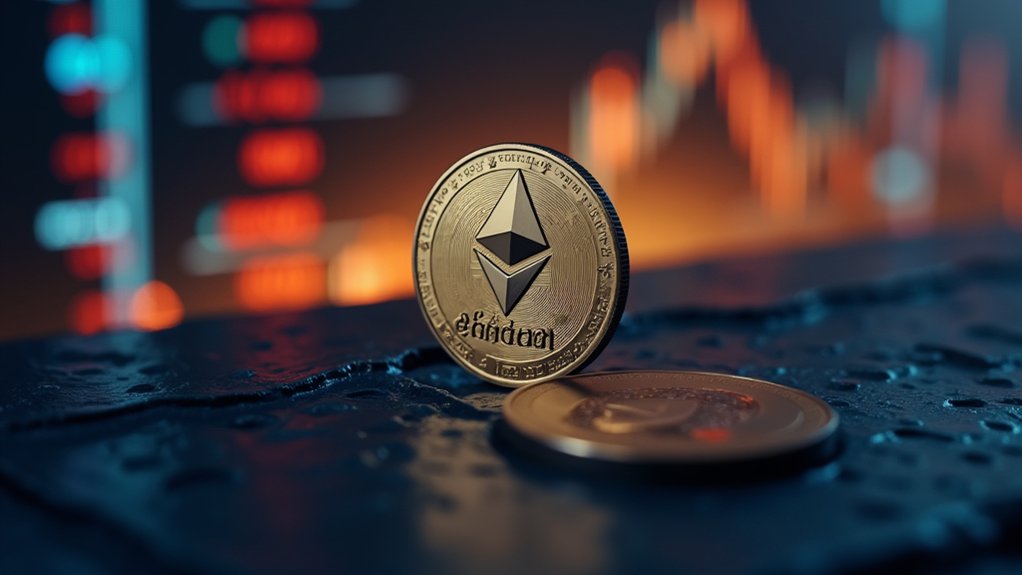The cryptocurrency market has evolved into a $3.33 trillion digital financial ecosystem where virtual currencies are bought, sold, and traded through blockchain technology. Bitcoin leads the charge, approaching $70,000, while Ethereum maintains its strong second position. With 28% of American adults now holding crypto assets, the market has shifted from pure speculation to legitimate investment territory. Traditional finance's growing embrace of cryptocurrencies, particularly through ETFs, signals a transformative chapter in this digital revolution.

While traditional financial markets grappled with uncertainty in 2024, the cryptocurrency landscape underwent a remarkable transformation that sent digital assets soaring to unprecedented heights. The total market capitalization reached a staggering $3.33 trillion by October, with Bitcoin leading the charge as it danced near the $70,000 mark. Like a digital gold rush, the approval of spot Bitcoin ETFs in January sparked a wave of institutional interest that reshaped the market's dynamics. Integration with traditional finance has accelerated rapidly, as major TradFi investments signal the market's growing legitimacy.
The numbers tell a compelling story: 28% of American adults now hold cryptocurrencies, representing 65 million investors who have embraced this digital frontier. Bitcoin remains the crown jewel, claiming 74% of crypto portfolios, while Ethereum continues its steady march as the reliable second-in-command. Meanwhile, Dogecoin and Solana have carved out their own niches, proving that there's room for both the serious and the whimsical in this evolving ecosystem. The U.S. cryptocurrency market stands at US$557.8 Million in 2024, showcasing the nation's significant role in digital asset adoption.
The regulatory landscape has shifted dramatically under the Trump administration's pro-crypto stance, bringing a sense of legitimacy to what was once dismissed as a fringe investment. ETFs have become the golden bridge between traditional finance and crypto, with these investment vehicles acquiring an impressive 515,000 Bitcoin in their first year – more than double what miners produced. Regulatory clarity is becoming increasingly vital as investors demand enhanced security measures and fraud protection.
Yet, beneath the glittering surface of all-time highs and institutional adoption, challenges persist like shadows in a digital dawn. Volatility continues to test nerves, while environmental concerns about mining operations spark heated debates. Cybersecurity threats lurk in the virtual shadows, reminding investors that with great potential comes great responsibility.
Looking ahead, the market shows signs of maturing beyond mere speculation. Stablecoins are revolutionizing payment systems, while the tokenization of real-world assets opens new frontiers for investment. As central banks cautiously explore blockchain technology, cryptocurrency's role in diversified portfolios grows stronger.
The market has evolved from a speculative playground into a serious financial instrument, though it retains its characteristic ability to surprise and challenge conventional wisdom.
Frequently Asked Questions
How Do I Protect My Cryptocurrency Wallet From Hackers and Cyber Threats?
Protecting cryptocurrency wallets requires using cold storage hardware devices, enabling two-factor authentication, practicing secure online behavior, avoiding public Wi-Fi, and implementing strong unique passwords. Regular backups and software updates enhance security further.
What Tax Implications Do I Need to Consider When Trading Cryptocurrencies?
Cryptocurrency trades trigger capital gains taxes, with rates varying between short-term (10-37%) and long-term holdings (0-20%). All transactions must be reported to the IRS, including crypto-to-crypto trades and purchases using cryptocurrency.
Can I Mine Cryptocurrencies Using My Personal Computer at Home?
Personal computers can mine cryptocurrencies, particularly altcoins, using CPU or GPU power. However, profitability depends on hardware specifications, electricity costs, and cryptocurrency values. Mining pools offer better chances of earning rewards.
Which Cryptocurrency Exchanges Are Considered the Most Reliable and Trustworthy?
Binance, Coinbase, and Kraken are widely recognized as the most reliable cryptocurrency exchanges. They offer robust security measures, regulatory compliance, high liquidity, and established track records of trustworthy operations.
How Do Government Regulations Affect Cryptocurrency Prices and Trading Activities?
Government regulations directly impact cryptocurrency prices and trading activities through market sentiment shifts. Positive regulatory news typically boosts values, while restrictive measures often trigger sell-offs and reduced trading volumes across exchanges.









